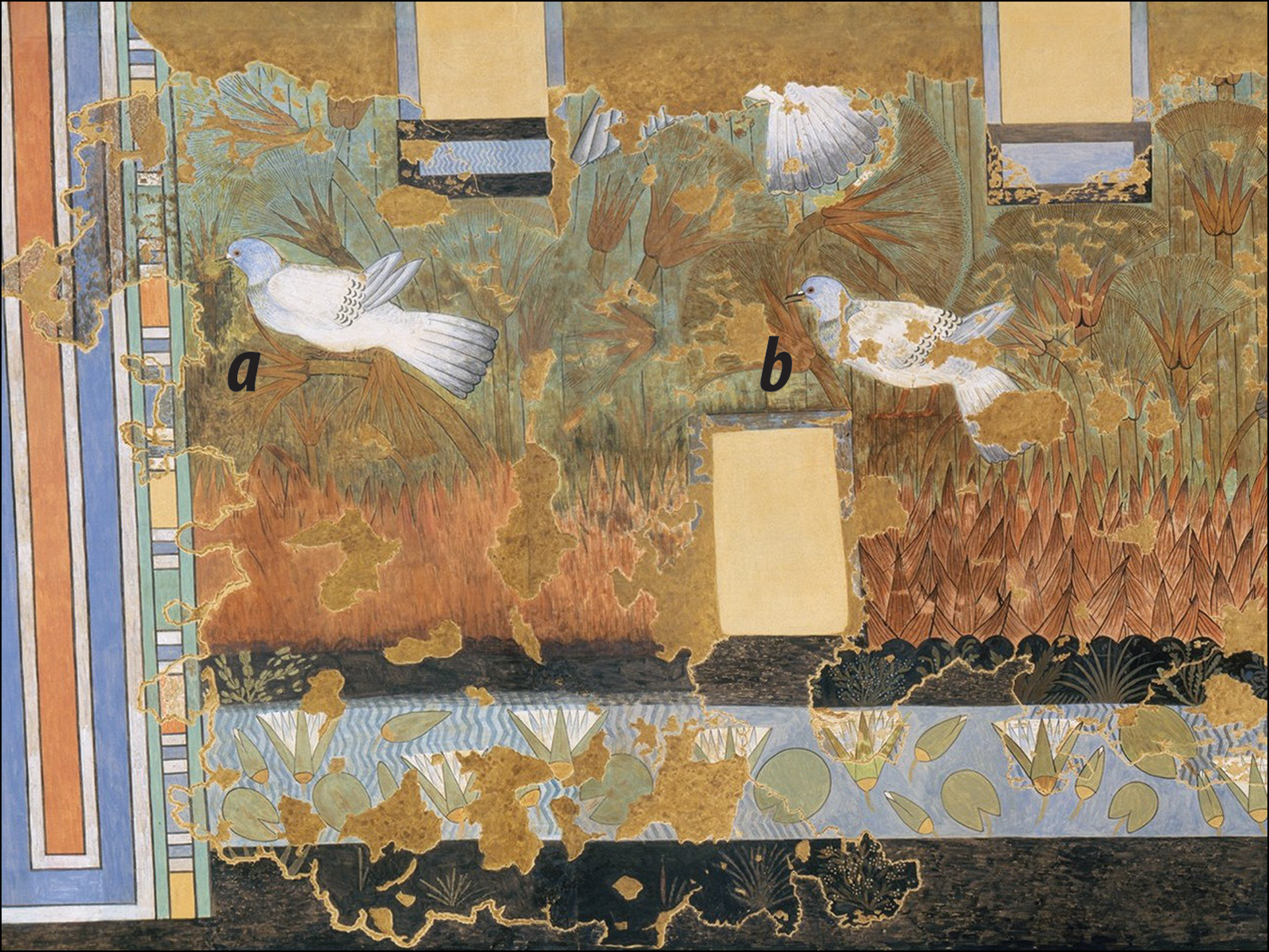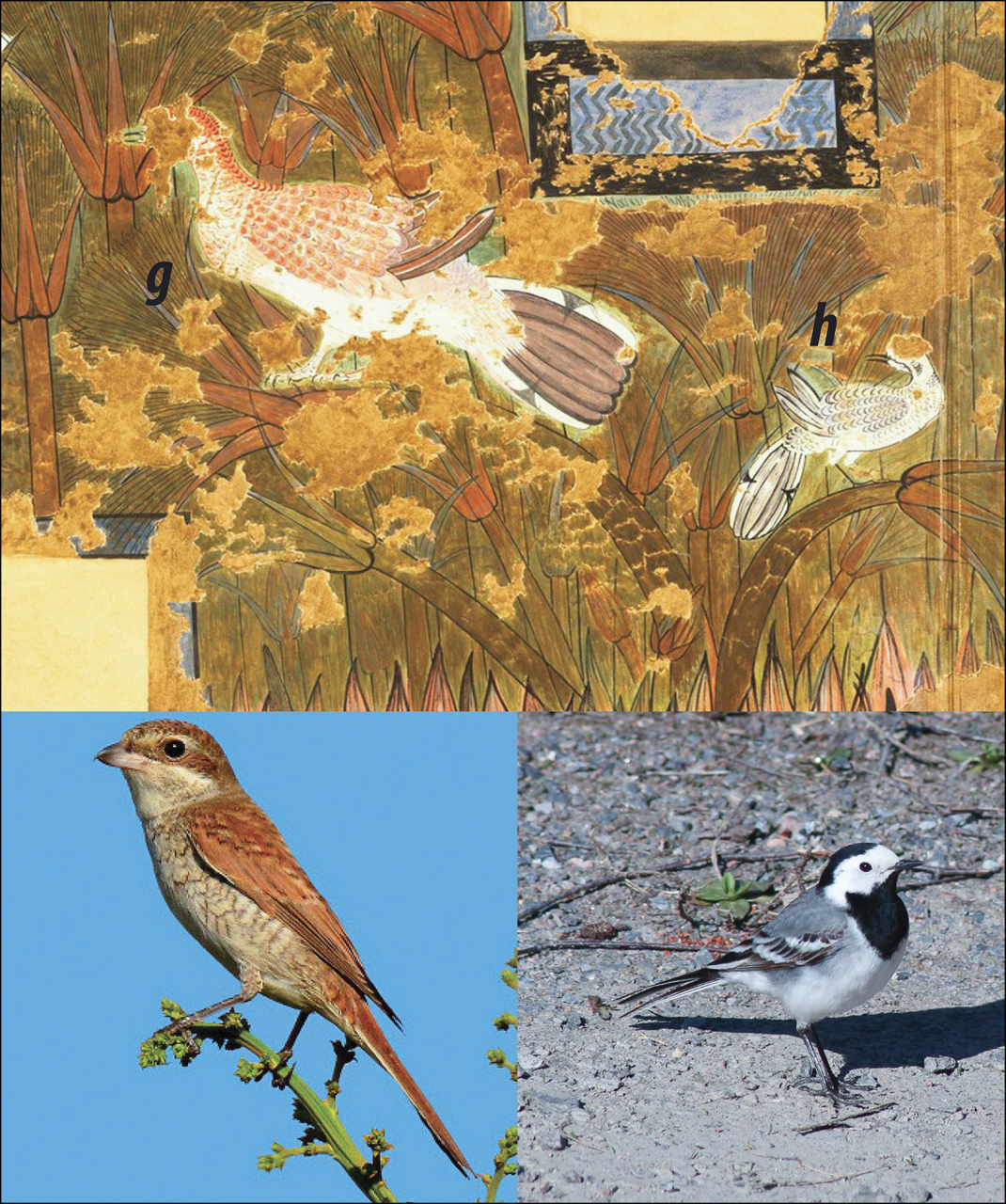Archaeologists discovered the painting about a century ago, when it still resided on the wall of a palace at the Amarna archaeological site – the area that was the ancient Egyptian capital of the 18th Dynasty, located today from Cairo. now 300 kilometers south. Previously, several studies have investigated the “identity” of the animals depicted, but the newly published study is the first time scientists have identified the birds depicted in the painting.
Most of the birds in the painting are stone robins (scientific name Columba livia), but besides that, scientists also recognized a small kingfisher (Ceryle rudis), an individual red-backed shrike (Lanius collurio) and a white wagtail (Motacilla alba).

The authors studied a copy of the famous painting and used bird studies and biological classification to accurately determine the identities of the birds in the painting. The results were published by them in Antiquity magazine on December 15.
The room depicted in the painting was nicknamed the “Green Room” by archaeologists, with a scene that includes a lake containing water lilies, a spot on the shore of a sedge tree, and here and there, many birds perched in the middle of the scene. peace. According to researchers, paintings depicting realistic scenes will help royal family members relax, no different from modern people hanging landscape paintings in their homes.
Also according to the group of scientists, it is possible that the room contains both scented water and live music to increase the “revitalization” ability of the room where the paintings are hung.
The famous green room
During the period between 1353-1336 BC, pharaoh Akhenaten (King Tutankhamun’s father) ruled Egypt. He was the one who changed the religion of the North African country when he ordered worship activities to focus around the sun god Aten. It was he who ordered the construction of the capital Akhetaten (present-day Amarna region) and the construction of a palace for the royal family.
The site was forgotten over time until around 1923-1925, when the Egyptian Exploration Community excavated the palace. At this time, the paintings on the walls of the Green Room had almost disappeared due to time and harsh climate. Egyptologist Nina de Garis Davies took pains to describe what remained on the wall.
Today, all that remains are copies painted by Nina de Garis Davies, because the original painting is no longer available.

” The only way to preserve the paintings is to bury the whole room in the sand again ,” said Professor Barry Kemp at Cambridge University. “ Archaeologists at that time did not choose this method due to fear that local people would harm them, but it seems their fears were unfounded .”
In 1926, efforts to restore the painting backfired and caused the ancient masterpiece to fade beyond repair. Modern researchers have had to rely on copies drawn by de Garis Davies to identify the birds appearing in the painting.
The two identified species, the rock kingfisher and the small kingfisher, appear year-round in Egypt, however there are birds in the painting that are migratory birds. In the scientific report, the researchers state that “ red-backed shrikes usually migrate to Egypt in the fall, between August and November ,” while white wagtails “ usually migrate [to Egypt]. ] between October and April .”
The masterpiece on the palace wall depicts a number of rock groves, although they do not often appear around swamps, but often nest in bare cliffs. According to experts, perhaps ancient artists… added them to make the painting more vivid.
Furthermore, Egyptian artists also painted additional details for the white wagtail and red-backed shrike – triangular tails, details that are not present on the bodies of these birds. According to the opinion, perhaps the ancient artists had their own intentions, to show that these birds came here from other places.
In any case, ancient Egyptian artists painted a painting that depicts almost exactly how birds and trees existed in ancient Egypt. “I think the paintings in the Blue Room are truly remarkable even when compared to ancient Egyptian art, and it is a perfect example of how closely [artists] observed the natural world. “, said Christopher Stimpson, professor emeritus at Oxford University.





